Lucky the one who never has to mend a broken heart, or not even a door!
I confessed to Troy, the assistant manager at Lowes, “I threw a boot and the heel got stuck in the door. Now the door has an-six-inch hole. What can I do?”
“You have two problems,” he said. “Improve your aim, and fill the hole in the door.”
I smiled. “I didn’t throw it at anybody. I was just angry,” I protested. I didn’t tell him I was broken-hearted, and frustrated. I didn’t regulate my emotions as I have learned to do in therapy. Now the door reflects the hole in my broken heart.
“Anyway, how do I fill the hole in a hollow core interior door?” I asked Troy.
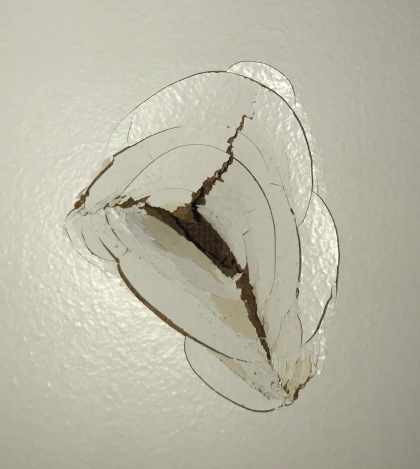
Back home, I follow his instructions: “Fill the hole with insulation foam. Be very careful because it expands quickly.”
Let it dry, and when it is hard, use a saw knife to cut it so that’s leveled on the door. Now, don’t use the knife to practice your aim.”
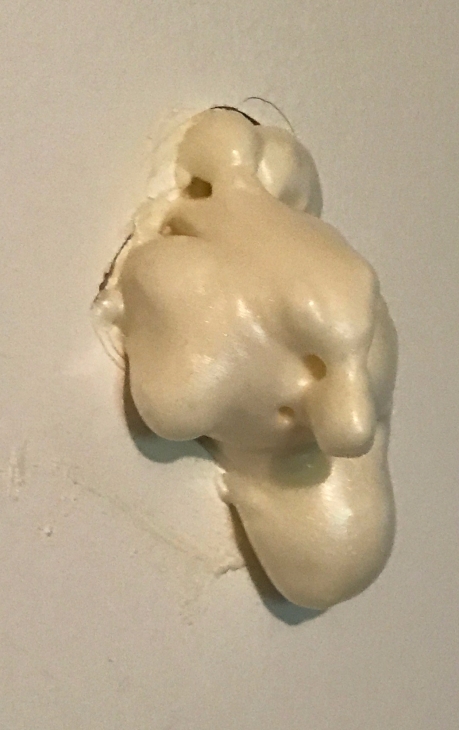
“After the hole is filled, apply spackling compound to smooth out the surface. Finally, sand the patch, clean it, and paint it.”
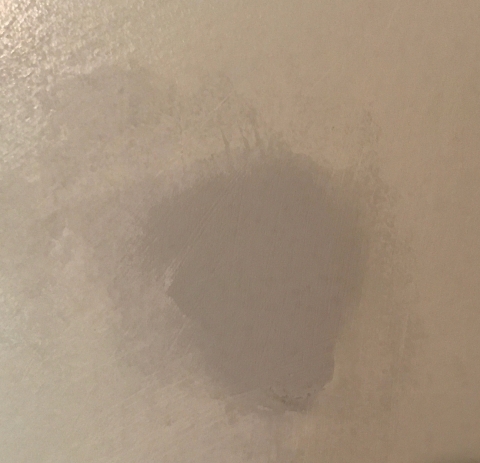
When I finished, I took pictures to bring to Troy to show my appreciation.
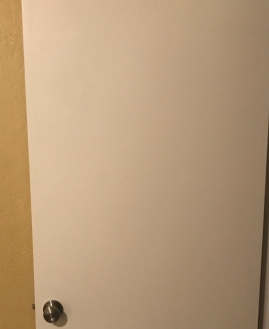
What I find interesting about this experience is that I didn’t have to call my psychiatrist to adjust the medication. It was enough to understand that some times strong emotions leave a mark or two on a door.
On the Internet I learned about actual places where you can go and smash things, and about actual screaming contests where people have fun letting go of strong emotions.
I’m always looking for alternatives to the medication. Not everything has to be regulated with chemicals and psychiatric wards. Today my emotional toolbox includes insulation foam and spackling compound.
Spanish Version
Corazón Roto / Puerta Reparada
Suerte el de aquel que nunca tiene que reparar un corazón roto, o ¡ni siquiera una puerta!
En la ferretería Lowes, le confieso a Troy, el asistente al gerente, “Tiré una bota y el tacón se quedó atascado en la puerta. Ahora la puerta tiene un hueco de 15 centímetros.”
“Tienes dos problemas, me dijo. “Mejorar tu puntería, y reparar el hueco en la puerta.”
Le sonreí. “Yo no se lo tiré a nadie. Estaba molesta,” protesté. Lo que no le dije era que estaba despechada, y frustrada. No regulé mis emociones como he aprendido a hacer en la terapia. Ahora la puerta refleja el hueco en mi corazón roto.
“De cualquier manera, ¿Cómo tapo un hueco en una puerta interior de núcleo vacío?” le pregunté a Troy.
De vuelta en casa, sigo sus instrucciones: “Llena el hueco con espuma de aislamiento. Ten mucho cuidado porque se expande rápidamente.
Déjala secar, y cuando esté dura, córtala al ras de la puerta con un cuchillo de sierra. No vayas a usar el cuchillo para practicar tu puntería.”
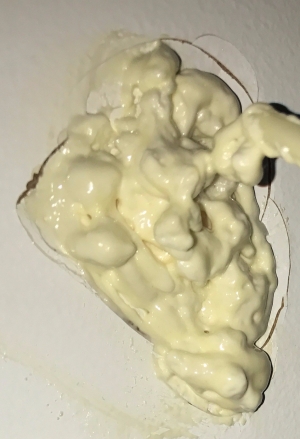
“Después de llenar el hueco, aplica compuesto para relleno con una espátula para alisar la superficie. Finalmente, líja el parche, limpia el área, y píntala.”
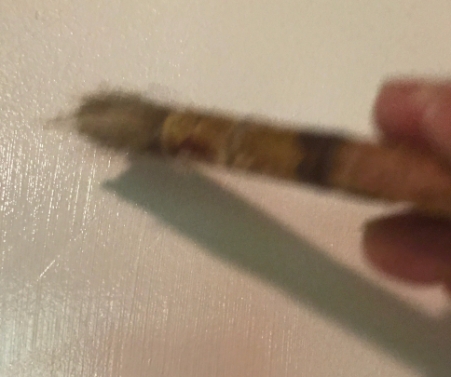
Cuando terminé tomé fotos para llevarle a Troy como muestra de agradecimiento.
Lo que me parece interesante de esta experiencia es que tuve que llamar al siquiatra para ajustar la medicina. Bastó con entender que a veces las emociones fuertes pueden dejar una marca en una puerta.
En la internet aprendo que hay lugares donde uno puede ir a destrozar cosas, o de concursos de gritos donde la gente se divierte liberando de emociones fuertes.
Siempre estoy buscando alternativas. No todo tiene que ser regulado con químicos y hospitalizaciones. Hoy día mi caja de herramientas emocionales incluye espuma de aislamiento y compuesto para relleno.





